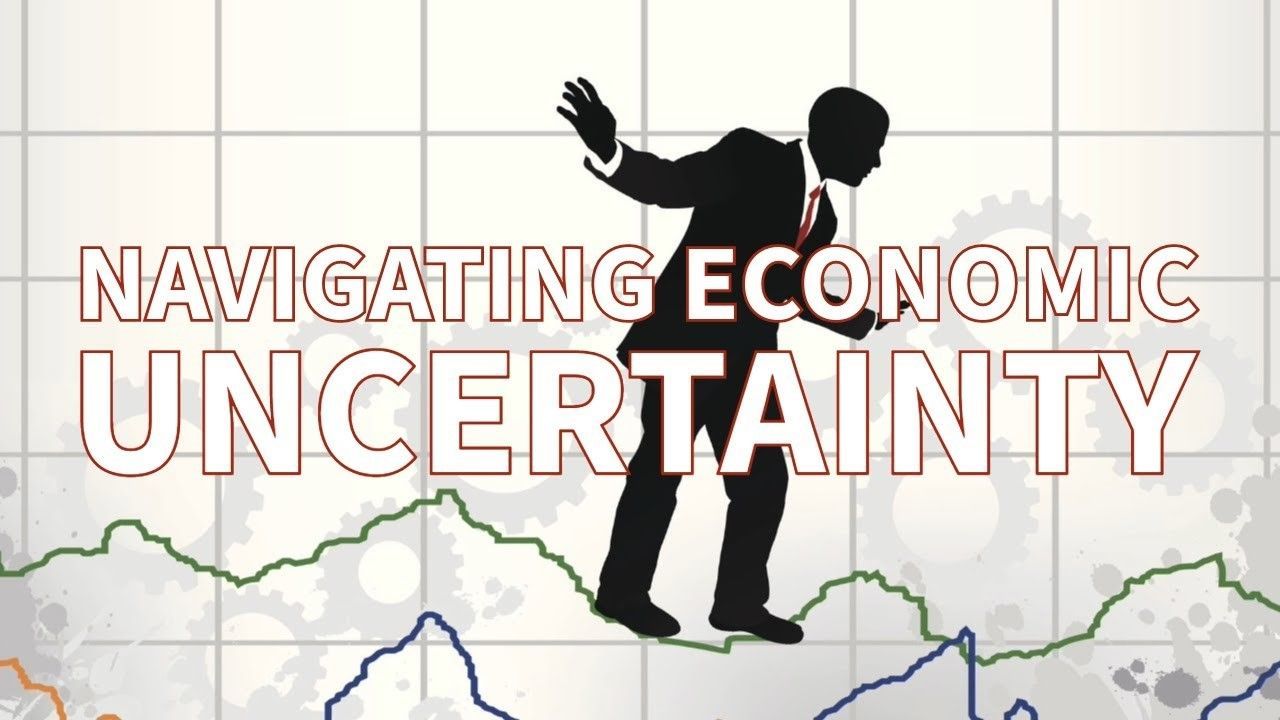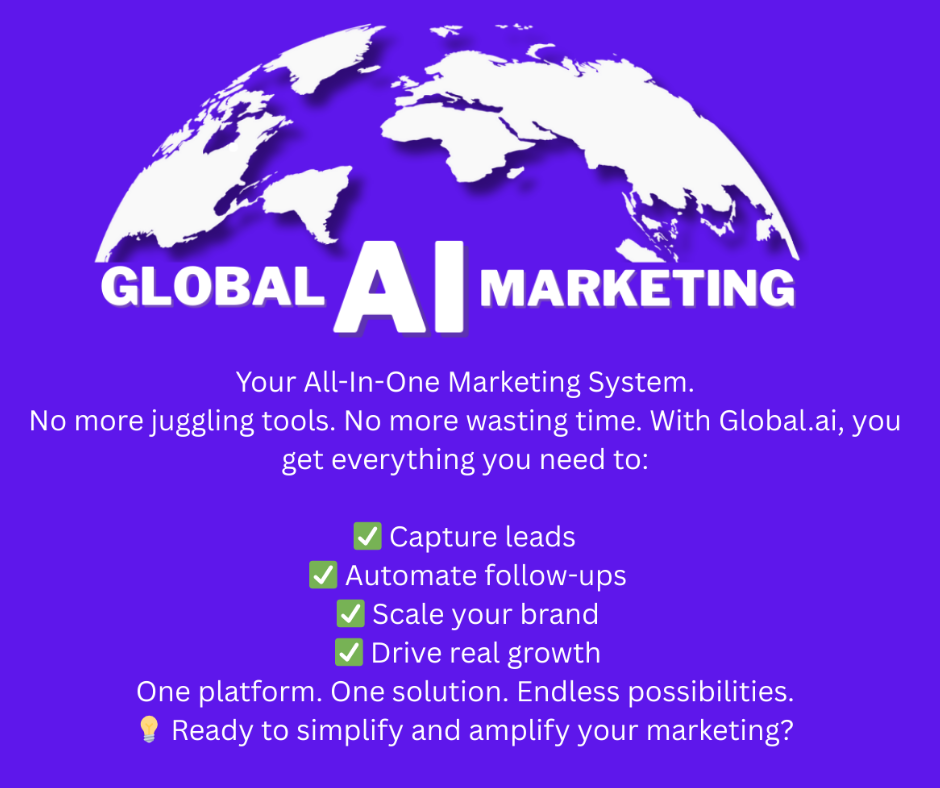Navigating Economic Uncertainty: 5 Strategies Entrepreneurs Can Use to Thrive in 2024

As we approach 2024, the global economic environment remains as unpredictable as ever. With the aftershocks of the pandemic still reverberating, inflationary pressures rising, and geopolitical tensions adding to the mix, entrepreneurs face a daunting landscape. However, within these challenges lie opportunities for those willing to adapt, innovate, and strategically steer their businesses toward success.
This newsletter explores five essential strategies that entrepreneurs can leverage to not just survive but thrive in the face of economic uncertainty in 2024.
1. Embrace Agility in Business Operations
Agility isn’t just a buzzword; it's a survival tool in today’s business climate. The pace of change in markets, consumer behavior, and global conditions has accelerated to the point where rigid business models can quickly become obsolete. The ability to pivot and adapt has become the difference between thriving and floundering.
Why Agility Matters
Consider the companies that have thrived over the past few years. Many of them share a common trait: agility. They could quickly respond to market disruptions, whether by shifting production lines, adopting new sales channels, or reconfiguring supply chains. This adaptability allowed them to meet new demands and capture opportunities while others struggled to keep up.
For entrepreneurs, agility can manifest in various ways:
- Flexible Supply Chains: In an era where global supply chains are often disrupted, having the flexibility to source materials or products from multiple suppliers can prevent bottlenecks and delays. Building relationships with local suppliers as alternatives can also mitigate risks associated with international trade tensions or logistical challenges.
- Dynamic Workforce Models: The pandemic accelerated the adoption of remote work, proving that traditional office setups are not the only way to operate. Moving forward, businesses should consider hybrid work models that blend remote and in-office work, providing flexibility for employees while reducing overhead costs.
- Rapid Product Iteration: In uncertain times, speed to market is crucial. Entrepreneurs should focus on developing processes that allow for quick product iterations based on customer feedback. This approach ensures that your offerings remain relevant and competitive, even as consumer preferences shift.
How to Implement Agility
To build agility into your business, start by assessing your current operations. Identify areas where rigidity exists—whether in supply chain management, workforce structure, or product development—and develop strategies to introduce flexibility. Invest in technology that enables quick decision-making, such as real-time data analytics, and cultivate a company culture that embraces change and innovation.

2. Focus on Cash Flow Management
Cash flow management is the cornerstone of financial stability, particularly in uncertain economic environments. The old adage "cash is king" rings truer than ever when markets are volatile and access to capital becomes more challenging.
Understanding Cash Flow
Cash flow represents the inflows and outflows of cash in your business. Positive cash flow means that more cash is coming into the business than going out, while negative cash flow indicates the opposite. In times of economic uncertainty, maintaining a positive cash flow is crucial to ensuring that your business can meet its obligations, invest in growth opportunities, and withstand unexpected challenges.

Strategies for Managing Cash Flow
Effective cash flow management requires a proactive approach. Here are some strategies to consider:
- Regular Cash Flow Forecasting: Create detailed cash flow forecasts that project your financial position over the next few months or even years. Regularly update these forecasts based on actual performance and changing market conditions. This will help you anticipate cash shortages and take corrective action before they become critical.
- Cost Control: Identify non-essential expenses that can be reduced or eliminated without affecting your core operations. Consider renegotiating contracts with suppliers to secure better terms or exploring cost-saving technologies that improve efficiency.
- Credit Management: Review your credit policies to ensure that you are receiving payments on time. Consider offering early payment discounts to encourage prompt payments or tightening credit terms for customers with a history of late payments.
- Access to Credit Lines:
Secure access to credit lines before you need them. This provides a financial cushion that can be drawn upon in case of unexpected cash flow challenges. Establish relationships with financial institutions and explore government-backed loan programs designed to support businesses during economic downturns.
Practical Steps
To manage cash flow effectively, implement a rigorous financial monitoring system. Regularly review your accounts receivable and payable, and ensure that you have a clear understanding of your cash flow cycle. Consider using financial software that offers real-time cash flow tracking and forecasting, giving you the insights needed to make informed decisions.
3. Invest in Digital Transformation
The digital revolution has fundamentally changed how businesses operate, and those that fail to adapt risk being left behind. Digital transformation is no longer a luxury—it’s a necessity for survival and growth in an increasingly competitive landscape.
The Importance of Digital Transformation
Digital transformation involves integrating digital technologies into all areas of your business, fundamentally changing how you operate and deliver value to customers. It goes beyond simply adopting new tools; it requires a cultural shift that embraces innovation, data-driven decision-making, and continuous improvement.
Key Areas for Digital Investment
To thrive in 2024, entrepreneurs should focus on several key areas of digital transformation:
- Automation: Automating routine tasks can free up valuable time for your team to focus on strategic initiatives. Automation tools can streamline processes such as invoicing, inventory management, and customer service, reducing the risk of human error and improving efficiency.
- Data Analytics: Informed decision-making relies on accurate data. Invest in analytics tools that provide insights into customer behavior, market trends, and operational performance. These insights can help you identify opportunities, optimize marketing efforts, and make informed strategic decisions.
- E-Commerce: The shift to online shopping accelerated during the pandemic, and this trend shows no signs of slowing down. If you haven’t already, consider developing an e-commerce platform that allows you to reach a broader audience and provide a seamless shopping experience. Ensure that your website is mobile-friendly, as an increasing number of consumers are making purchases from their smartphones.
- Cybersecurity: With increased digitalization comes the need for robust cybersecurity measures. Protecting your business from cyber threats is essential to maintaining customer trust and safeguarding sensitive information. Invest in cybersecurity tools and educate your team on best practices for preventing data breaches.
Implementing Digital Transformation
Begin your digital transformation journey by assessing your current technological infrastructure. Identify gaps and areas where digital tools can enhance your operations. Develop a digital strategy that aligns with your business goals and customer needs, and prioritize investments that offer the greatest return. Remember that digital transformation is an ongoing process, so be prepared to continuously adapt and evolve as new technologies emerge.
4. Prioritize Customer Relationships
In an uncertain economic climate, retaining and nurturing your existing customer base can be more valuable than acquiring new customers. Strong customer relationships are built on trust, and maintaining that trust is crucial for business stability and growth.
The Value of Customer Loyalty
Loyal customers are more likely to make repeat purchases, refer your business to others, and provide valuable feedback. In times of economic uncertainty, when consumers are more cautious with their spending, a loyal customer base can provide a steady revenue stream that helps buffer against market fluctuations.
Strategies for Building Strong Customer Relationships
To strengthen your customer relationships, consider the following strategies:
- Personalized Communication: Tailor your communication to individual customer needs and preferences. Use customer data to send personalized emails, offer targeted promotions, and provide relevant product recommendations. Personalized interactions show customers that you understand and value their unique needs.
- Exceptional Customer Service: Invest in training your customer service team to handle inquiries and issues promptly and professionally. Ensure that your team has the tools and knowledge to resolve problems efficiently, leaving customers satisfied with their experience. Consider implementing a customer feedback loop that allows you to identify areas for improvement and address concerns before they escalate.
- Loyalty Programs: Develop a loyalty program that rewards repeat customers with discounts, exclusive offers, or other incentives. Loyalty programs not only encourage repeat business but also create a sense of belonging and appreciation among your customers.
- Engagement Through Content:
Provide valuable content that educates, entertains, or inspires your customers. This could include blog posts, videos, webinars, or newsletters that address topics of interest to your audience. Engaging content keeps your brand top of mind and reinforces your expertise in your industry.
Taking Action
To prioritize customer relationships, start by gathering feedback from your existing customers. Use surveys, social media, and direct interactions to understand their needs, preferences, and pain points. Based on this feedback, develop a customer relationship management (CRM) strategy that focuses on personalized communication, exceptional service, and ongoing engagement.
5. Diversify Revenue Streams
Relying on a single source of income can be risky, especially in an unpredictable economy. Diversifying your revenue streams can provide stability and reduce the impact of market fluctuations on your business.
The Benefits of Diversification
Diversification spreads risk across multiple income sources, making your business less vulnerable to downturns in any one area. It also opens up new opportunities for growth, allowing you to tap into different markets, customer segments, or product categories.
Strategies for Revenue Diversification
To diversify your revenue streams, consider the following strategies:
- Expand Product or Service Offerings: Look for opportunities to introduce new products or services that complement your existing offerings. For example, if you run a retail business, consider adding an online subscription service that delivers curated products to customers regularly. This not only generates additional revenue but also enhances customer loyalty.
- Explore New Markets: Identify new geographic markets where your products or services could be in demand. Expanding into international markets or underserved regions can help you reach new customers and reduce dependence on your current market.
- Develop Strategic Partnerships: Collaborate with other businesses to create joint offerings or cross-promotions that benefit both parties. Strategic partnerships can help you reach new audiences and generate additional revenue without the need for significant upfront investment.
- Leverage Digital Channels: If your business is primarily brick-and-mortar, consider diversifying into digital channels. This could include selling products online, offering virtual consultations or services, or creating digital content that generates revenue through advertising or subscriptions.
Implementing Diversification
To diversify effectively, start by conducting a thorough analysis of your current business model and identifying areas where you can expand. Consider the resources, expertise, and infrastructure needed to support new revenue streams, and develop a plan that aligns with your overall business strategy. Remember that diversification is an ongoing process, so be prepared to explore and test new ideas continually.
Navigating economic uncertainty requires a proactive and strategic approach. By embracing agility, focusing on cash flow management, investing in digital transformation, prioritizing customer relationships, and diversifying revenue streams, entrepreneurs can position themselves to not only survive but thrive in 2024. The challenges ahead may be significant, but so are the opportunities for those who are prepared to adapt and innovate.
As you implement these strategies, remember that success in uncertain times is about more than just weathering the storm—it's about emerging stronger and more resilient on the other side. Stay focused, stay agile, and continue to look for ways to grow and evolve your business. With the right mindset and strategies, 2024 can be a year of opportunity and growth, even in the face of economic uncertainty.
FREE BUSINESS ADVISORY CONSULTATION:
www.manfreandassociates.com




